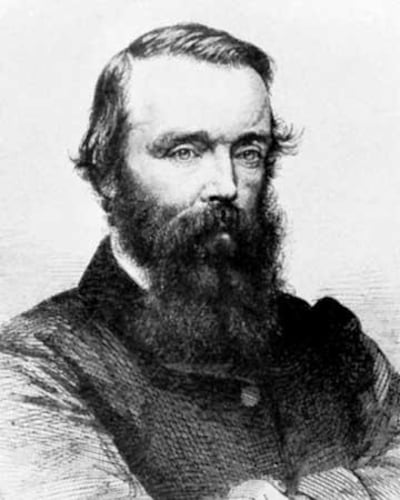On the banks of a remote creek in Australia stands a large eucalyptus tree. It’s a coolibah - the name might be familiar from the lyrics of the song “Waltzing Matilda” - and it’s old, probably 250 years old.
If you want to see it you need to drive more than 800km inland from Adelaide. You’ll find it 400km west of Thargomindah, a town of some 200 inhabitants, and 44km east of Innamincka, whose permanent residents number about 15, on the southern bank of the Bulloo Bulloo waterhole.
You get the picture. This tree is very far from anywhere at all, But 35,000 people visit the heritage-listed “Dig Tree” every year - thanks to its associations with a policeman from Galway called Robert O’Hara Burke.

Asked to name an Irish explorer most schoolchildren would probably opt for Ernest Shackleton, whose Antarctic heroics have made him a household name not just in Ireland but across the English-speaking world. Primary schoolchildren in Australia, however, learn about Burke.
He was the leader of an expedition which, in August 1860, set out to make the first crossing of the Australian continent from south to north. Think of the map of Australia; there’s a bump at the bottom (Melbourne) and a bite missing at the top (the Gulf of Carpentaria). In between lie more than 2,500km of countryside which ranges from stony desert to mangrove swamp and which, at the time, was almost completely unknown to white Australians.
Burke was born in 1821 in the manor house of St Clerans at Craughwell, Co Galway - better known in more recent times as the home of the film director John Huston - into a British army family. He served with the Austrian army for seven years before joining the Royal Irish Constabulary and working as a mounted policeman in Dublin. In 1853 he emigrated to Australia, where he joined the Melbourne police force.
Why Burke was chosen to lead the Victorian Exploring Expedition is anybody’s guess: he had no experience of the Australian bush, and seems to have been impulsive to the point of recklessness. But he could clearly talk the talk, and there was a huge public fanfare as the expedition - comprising 19 men, 27 camels and 23 horses - set off on Monday August 20th, 1860.
It was all downhill from there. Burke made a series of incompetent decisions - splitting his party, jettisoning provisions, changing routes on a whim. Even so, he and his second-in-command, the talented and meticulous English surveyor William John Wills, reached the Gulf of Carpentaria in February. It was the height of the Queensland “wet” season and the area was flooded, so they never managed to actually catch sight of the ocean. After hours of struggling through mangrove swamps they tasted salty water, concluded that they had arrived at the Arafura Sea, and headed south again.
On the return journey, Burke’s comedy of errors descended into tragedy as first Wills, then Burke himself, slowly starved to death. Five other members of the expedition also died. Just one of the four men who had reached the Gulf of Carpentaria survived. He was John King, a soldier from Co Tyrone who had been hired to look after the camels and their Indian handlers.
If there are heroes in this story, King is surely one of them. So are the Aboriginal people who kept him alive until a rescue party arrived to fetch him. If King had died, if Wills’s immaculately detailed expedition notebooks had never been found, the entire Burke and Wills expedition would have vanished into the vastness of the Australian bush.
Instead,it is commemorated as a landmark in the history of white Australia - with all the bittersweet implications inherent in that phrase. That’s why so many people make the pilgrimage to The Dig Tree, which served as a kind of postbox where the explorers left messages and supplies for each other, every year.
Appropriately, however, Burke’s name lives on in that of the Burke River in Queensland. It exists only for a few weeks at a time, and only during the wet season. A bittersweet epitaph, if ever there was one.
* If you know of an Irish connection which would interest readers of this column, please email awallace@irishtimes.com with details of the story, as well as your contact address.












